Monthly Archives: October 2018
 Today is National Sweetest Day, and it is not to be confused with Valentine’s Day. Where Valentine’s Day is is for people in love. National Sweetest Day got its beginnings, through a holiday founded by the National Confectioners’ Association in 1916 called Candy Day. On October 14, 1916, candy shops around the country filled newspapers announcing their sweetest treats and delights. National Sweetest Day is a day that encourages everyone to be generous even in the smallest ways. It reminds us that even small tokens of kindness improve the lives of those around us, who are suffering or going without. The day might have begun with candy and sweets, and may have encouraged us to take home sweets to our sweethearts and friends…similar to Valentine’s Day, but evolved into something very different. The earliest mentions of the “Sweetest Day of the Year” were in several advertisements found in Indiana, Minnesota, and Texas newspapers. It was not the official name of the day…not yet. In 1917 with war raging in Europe, many retailers encouraged patrons to “Get one for yourself and one for the boys overseas!”
Today is National Sweetest Day, and it is not to be confused with Valentine’s Day. Where Valentine’s Day is is for people in love. National Sweetest Day got its beginnings, through a holiday founded by the National Confectioners’ Association in 1916 called Candy Day. On October 14, 1916, candy shops around the country filled newspapers announcing their sweetest treats and delights. National Sweetest Day is a day that encourages everyone to be generous even in the smallest ways. It reminds us that even small tokens of kindness improve the lives of those around us, who are suffering or going without. The day might have begun with candy and sweets, and may have encouraged us to take home sweets to our sweethearts and friends…similar to Valentine’s Day, but evolved into something very different. The earliest mentions of the “Sweetest Day of the Year” were in several advertisements found in Indiana, Minnesota, and Texas newspapers. It was not the official name of the day…not yet. In 1917 with war raging in Europe, many retailers encouraged patrons to “Get one for yourself and one for the boys overseas!”
By April of 1918, the United States officially entered the war in Europe and with that came rationing. Sugar, as well as many other commodities, became scarce. The holiday that was starting to see such success was shelved. With the end of the war in 1919, sweetness returned to October. So sweet in fact, Candy Day became an entire week. Then in 1923, the day kicked into the full charitable swing. Sweetest Day’s theme of charity and giving became apparent in 1921 when the Detroit Retail Confectioners, Detroit Wholesale Confections Club, Detroit Jobbing Confectioners Association and the Michigan Confectioners Club joined forces with the Red Cross to distribute thousands of bags of candy to hospitals, orphanages, shelters and homes across Michigan. The celebration also included 100 regulation army target balloons which dropped coupons worth a box of candy. In 1929, Sweetest Day settled into its current home, the third Saturday in October.
Now, National Sweetest Day is a day to take care of all those who need care. The theory is that even those who need a lot of care, when given the smallest token of kindness will feel the effects. We have seen that in the many videos where someone brings a meal to a homeless person. A little treat, a card, a show of support during a time of need may be the sweetest gift on this day. Of course, a card would not do much for a homeless, and candy wouldn’t do much for them either, but a piece of candy would put a smile on their face,  simply because it would be so unexpected. National Sweetest Day could also be a day for random acts of kindness. A day do something nice for someone else. There is so little of that in the world in this day and age, and maybe what started out as a specific day to do something nice for others, could eventually become a daily random acts of kindness day. Originally designated to be celebrated the second Saturday of every October, the confectioners’ convention in Detroit in May of 1916 made the final resolution. Walter C. Hughes, the secretary of the National Confectioners’ Association, encouraged Americans to patronizes their local candy shops, bakers, and druggist for the highest quality confections.
simply because it would be so unexpected. National Sweetest Day could also be a day for random acts of kindness. A day do something nice for someone else. There is so little of that in the world in this day and age, and maybe what started out as a specific day to do something nice for others, could eventually become a daily random acts of kindness day. Originally designated to be celebrated the second Saturday of every October, the confectioners’ convention in Detroit in May of 1916 made the final resolution. Walter C. Hughes, the secretary of the National Confectioners’ Association, encouraged Americans to patronizes their local candy shops, bakers, and druggist for the highest quality confections.
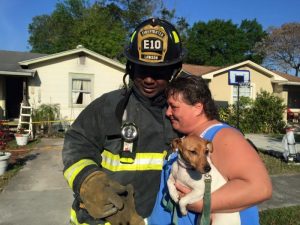 When people are having a bad day, or the worst possible day, people often don’t know what to do to help. And sometimes there is seemingly nothing that can be done to really help, but as most of us know, whether we realize it or not, there is always one thing that can help…a hug. Of course, there is a right time and a wrong time to give a hug, but once the emergency part of a situation is over, we are often left with overwhelming emotions, and they are often held in because we are trying not to do the one thing that we really need to do…cry.
When people are having a bad day, or the worst possible day, people often don’t know what to do to help. And sometimes there is seemingly nothing that can be done to really help, but as most of us know, whether we realize it or not, there is always one thing that can help…a hug. Of course, there is a right time and a wrong time to give a hug, but once the emergency part of a situation is over, we are often left with overwhelming emotions, and they are often held in because we are trying not to do the one thing that we really need to do…cry.
Over the years during which I was a caregiver, and now with what I went through during my husband’s heart attack, I have had a number of situations where the ambulance had to be called. In the whirlwind that followed, I had to keep my composure and tell the medical personnel what happened, and any other pertinent information they needed. I could not let myself break down. I couldn’t cry…or scream, which is what I really wanted to do. I had to hold it together, because my parents, in-laws, and then my husband, needed me to hold it together. I was their voice. Then, as suddenly as the ambulance had arrived, they loaded up their patient, and headed out. I found myself standing there alone, feeling very small and very scared. Then, a firefighter, who had also been dispatched, men who thankfully knew me because my husband had been their mechanic, came up to me and hugged me and encouraged me. Yes, the tears flowed then. There was no longer a need, nor any possible way to hold them back. Those firefighters can’t possibly comprehend what that hug meant to the person who received it. Hugs allow the emotions to release. It is the much needed human contact, when I felt entirely alone.
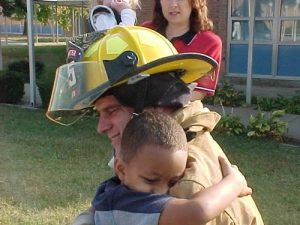
I am blessed to have many good people in my life. People who understand how badly a hug is needed. People who understand the power of a hug. My boss, Jim Stengel and his wife, Julie; my co-worker, Carrie Beauchamp; my siblings and in-laws; a friend and client, Donna LePage; and then, unexpectedly, my boss’s sons, Anthony and Michael Stengel, all sensed that I could really use a hug, and the power of those hugs has continued to help me. Each hug meant more than the giver can ever imagine. Each hug was given when the giver didn’t know what else to do, and yet each did exactly the right thing!! They instinctively knew that hugs are always healing. That is just the power of a hug.
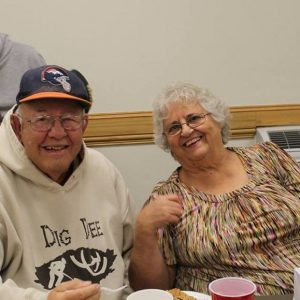 My uncle, Jim Richards lost his dad when he was a young not of just eight years. The death of a loved one affects each of us differently, as does the age we are, the age of the decedent, and the circumstances of the death. Some people decide that they were robbed, and end up living the rest of their lives in anger. Others decide that our lives are what we make of them, and there are still people who love us and need us around. For Uncle Jim, the decision was easy. He was the type of person to be there for others. I suppose that many people would think that a life of service would never be what they would want, but Uncle Jim didn’t have to think twice. He knew that he would never leave anyone to go it alone. He would be there, beginning with his mom.
My uncle, Jim Richards lost his dad when he was a young not of just eight years. The death of a loved one affects each of us differently, as does the age we are, the age of the decedent, and the circumstances of the death. Some people decide that they were robbed, and end up living the rest of their lives in anger. Others decide that our lives are what we make of them, and there are still people who love us and need us around. For Uncle Jim, the decision was easy. He was the type of person to be there for others. I suppose that many people would think that a life of service would never be what they would want, but Uncle Jim didn’t have to think twice. He knew that he would never leave anyone to go it alone. He would be there, beginning with his mom.
As a dad, Uncle Jim all about his family. They lived on a little place east of Casper for as long as I can remember, and I remember going out there and thinking what a cool place it was. I had never lived in the country, and I thought it was very cool. As an adult, my husband, Bob and I lived in the the country too. I thought about Uncle Jim and Aunt Dixie’s place many times, and thought it was amazing that I lived in the country too, because it never occurred to me that I would when I was a kid.
Life didn’t change Uncle Jim either. He found that he had a heart for helping people. that heart for helping would follow Uncle Jim all his life. His family was his life, both his own family, and his mom and siblings. They 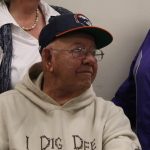 always knew that they could count on him, and he never let them down. They were a close, loving family, and his wife and children loved him very much. He helped his family many times over the years, and they were grateful, but it was when his grandchildren arrived that Uncle Jim really had the opportunity to help out, and it was one of the things that endeared him to his children forever. He and Aunt Dixie took care of the grandchildren while their parents worked. They didn’t need daycare. Such a blessing. they ran the kids to and from school when needed, and that was a great blessing. Uncle Jim’s has been a life of service to others, and and that is such an honorable thing to do.Today is Uncle Jim’s birthday. Happy birthday Uncle Jim!! Have a great day!! We love you!
always knew that they could count on him, and he never let them down. They were a close, loving family, and his wife and children loved him very much. He helped his family many times over the years, and they were grateful, but it was when his grandchildren arrived that Uncle Jim really had the opportunity to help out, and it was one of the things that endeared him to his children forever. He and Aunt Dixie took care of the grandchildren while their parents worked. They didn’t need daycare. Such a blessing. they ran the kids to and from school when needed, and that was a great blessing. Uncle Jim’s has been a life of service to others, and and that is such an honorable thing to do.Today is Uncle Jim’s birthday. Happy birthday Uncle Jim!! Have a great day!! We love you!
 I’m sure that most you have heard of the theory of Six Degrees of Separation, but in case you haven’t, it is the idea that all living things and everything else in the world are six or fewer steps away from each other, so that a chain of “a friend of a friend” statements can be made to connect any two people in a maximum of six steps. I can’t say that I have ever doubted that idea, but I really never gave it much thought really. The idea was originally set out by Frigyes Karinthy in 1929 and popularized in an eponymous 1990 play written by John Guare. It is sometimes generalized to the average social distance being logarithmic in the size of the population. It is all about what a small world it is. That each person is connected to every other person by just 6 steps. It was something I never have given much thought to.
I’m sure that most you have heard of the theory of Six Degrees of Separation, but in case you haven’t, it is the idea that all living things and everything else in the world are six or fewer steps away from each other, so that a chain of “a friend of a friend” statements can be made to connect any two people in a maximum of six steps. I can’t say that I have ever doubted that idea, but I really never gave it much thought really. The idea was originally set out by Frigyes Karinthy in 1929 and popularized in an eponymous 1990 play written by John Guare. It is sometimes generalized to the average social distance being logarithmic in the size of the population. It is all about what a small world it is. That each person is connected to every other person by just 6 steps. It was something I never have given much thought to.
As I became interested in family history, I could see how that could work in the grand scheme of things, with relation. I came across people who were related to me, as well as, being related to my husband. Those relationships had meaning to me and it also made me think about the six degrees of separation that I had heard about years before.
But the reality is that the six degrees of separation never became so obvious to me as last Sunday when my husband had a heart attack. Instantly, we had a group of people around us. Of those people, all concerned for my husband, I knew no one. I only knew that the two women were nurses, and there was a young man who had seen my husband fall. Somewhere in the parking lot was also a woman who knew she needed to pray for him. When we left for the hospital in the ambulance, I thanked the man from across the distance between us in the parking lot, but I still didn’t know his name. I had no idea how I would ever find out who these people were. I knew they were all heroes, and I didn’t know them. Then the six degrees of separation came into play.
First, my husband was saved, and that was a miracle. It was because of 4 people I not only didn’t know, but had now way of finding. They did what they needed to do, and left expecting nothing in return. We owed them so much, and had no way to thank them. Enter the six degrees of separation. I told my husband’s nurse about what had happened, and when her relief came on the next day, she told her about it, and Stephanie, the day nurse already had the first connection for us. The first nurse to help, Ginger, was her sister. And Ginger had the second connection, because she knew the second nurse, Val. Within a few hours, 2 out of the 4 were now known to us. When when I posted about my husband’s miraculous recovery, our friend, Sierra Schamber tagged someone. It was Sean, the young man who helped him first. Then, a woman named Chelsea called her dad to pray. My boss called a prayer partner, who just happened to be on the wife of Chelsea’s dad. I know all those heroes. I think I fully understand the six degrees of separation.
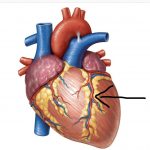 As a Christian, I can tell you that I believe in miracles. Nevertheless, I am still trying to wrap my mind around the awesomeness of God. Seriously, can any of us really wrap our mind around that? I think that the mind boggling, realization of the always loving God we serve is, never more prominent than when he reaches down, in our worst moment, and lifts us up, dries our eyes, and gives us instant peace.
As a Christian, I can tell you that I believe in miracles. Nevertheless, I am still trying to wrap my mind around the awesomeness of God. Seriously, can any of us really wrap our mind around that? I think that the mind boggling, realization of the always loving God we serve is, never more prominent than when he reaches down, in our worst moment, and lifts us up, dries our eyes, and gives us instant peace.
That moment came for me on Sunday afternoon, October 14, 2018, in the Walmart parking lot on the east side of Casper, Wyoming at 4:45pm. Some things you never forget, although I might be a few minutes off on the exact time. My husband, Bob Schulenberg and I had just finished buying groceries, and had loaded them in the car. Bob took the cart back to the cart station, and I opened the car and started it. Then, I looked at my phone, because Bob is a very social man, and almost always finds someone to talk to, no matter where we are.
I then heard a man, I now know to be Sean Pesicka-Taggart saying, “Sir…Sir?” I looked back and saw him kneeling near the back of my car, but there was a pickup right behind me, and it appeared that they were talking, so I did not get out of my car. The pickup, that I now know was driven by a Wyoming Medical Center, Progressive Care Unit, cardiac care nurse…Ginger Sims, pulled around the corner very quickly, and I thought she must be mad. Before I had time to contemplate that thought, a man knocked on my window and asked, “Do you know this guy?” It occurred to me that “this guy” must be Bob, so I jumped out of my car and went to the back of the car. The scene that met me there was…horrifying!! There lay Bob, blood flowing from his head where he had hit the pavement. While that would have been enough to bring fear to my heart, one look at his face told an even worse story. His eyes were blank and his skin had started turning blue. It looked as if he was dead, and that was my first thought…”I’m going to lose him right here!!” Then, I jolted my mind back to fight mode, and got down next to him and began talking to him.
At this point, nurse Ginger was behind him with her stethoscope…who has their stethoscope when they are off duty?? Thankfully Ginger does. Because she didn’t see him fall, she thought he had been hit by a car. She asked him to take a deep breath and when he didn’t respond, she asked if he could hear her, while checking for a pulse. Upon finding no pulse, she immediately got him on his back and began CPR. Working alone for a while, a WMC transport worker, Laura Lance spelled her doing CPR. Then, Wyoming Medical Center, surgical nurse…Val Boycheva, who was a friend of Ginger’s came on the scene and they worked together. When they heard me say Bob’s name, they asked if I knew him. When I said that he was my husband, they asked me to do rescue breathing. I did it…with instruction. I don’t think I could have done it without them telling me what to do…I was far too shook up to think straight.
As the CPR was going on, Sean was on the phone getting an ambulance, and Ginger had already told her son to  push the OnStar button to give the ambulance driver the exact location. When the ambulance arrived, they took over, and the police officer, also at the scene asked who I was. When I said I was his wife, he had me come over and give him some information. While doing that, the ambulance crew hooked Bob up to the Lucas Compression Devise, and when I turned around, it was engaged. If you have never seen the Lucas Compression Devise in action, all I can say is that it is a shock to watch…especially when it is on your loved one. The devise gives perfectly orchestrated compressions, so the ambulance crew can focus on other tasks. To the untrained spectator, it looks like those compressions are going from chest to pavement!! You can imagine breaking ribs and smashed organs, but in reality, while the ribs are cracked, the heart is simply given the right amount of compression to help sustain life. Bob was quickly prepared for the ride in the ambulance to the hospital where he received the best care available.
push the OnStar button to give the ambulance driver the exact location. When the ambulance arrived, they took over, and the police officer, also at the scene asked who I was. When I said I was his wife, he had me come over and give him some information. While doing that, the ambulance crew hooked Bob up to the Lucas Compression Devise, and when I turned around, it was engaged. If you have never seen the Lucas Compression Devise in action, all I can say is that it is a shock to watch…especially when it is on your loved one. The devise gives perfectly orchestrated compressions, so the ambulance crew can focus on other tasks. To the untrained spectator, it looks like those compressions are going from chest to pavement!! You can imagine breaking ribs and smashed organs, but in reality, while the ribs are cracked, the heart is simply given the right amount of compression to help sustain life. Bob was quickly prepared for the ride in the ambulance to the hospital where he received the best care available.
It was at this moment that Casper Fire Department firefighter, Jerod Levin, who is a friend of Bob’s from his time as Fire Department Mechanic for the City of Casper, saw me. He knew me as well, and immediately came to me and gave me the big hug that I desperately needed at that exact moment. For all firefighters…never underestimate the value of your hugs at an emergency medical scene. When the ambulance leaves with the love one, that person is left with serious emotions and doubts. Your hugs and encouraging words mean more than you will ever know. No matter what the outcome, those hugs and words of encouragement are vital. Jerod asked me if I wanted to ride in the ambulance, and I said that I did. He got me in, even holding my purse while I stepped in, then helped me get buckled, asked if he could call anyone for me, and if I wanted him to bring my car to the hospital. Talk about going above and beyond!! While en route to the hospital, Bob’s heart had to be shocked once, and when we arrived he was in full arrest. I didn’t know it at the time, but that almost always means bad news.
Bob was treated so quickly that it was almost shocking. He was taken for a CT scan of his head wound, and while there, the Cath Lab became available. He was taken directly up there, where he was met by two techs that he knew, because he has worked on their cars. Jon Cooke and Sam Cann made him feel comfortable and safe during the procedure. They determined where the blockage was, at which time they realized that he was going to survive the Widowmaker Heart Attack. A stent was placed and from the time he fell to the time the treatment was over was two hours. Two hours!! That is an amazingly short amount of time.
Unbeknownst to me, there was at least one person who saw what was going on and called her dad to have him pray with her over the man who fell in the Walmart parking lot. When I called my boss, Jim Stengel, he felt led to call his prayer partners, Donna and “Page” LePage to pray with them. The girl, Chelsea Kessler, who was with her husband Zachary, who called her dad was Page’s daughter, and they were praying as Donna and Jim prayed. It is my belief that nothing happens by chance in this world. God is always involved, and if people listen, they can find themselves in just the right place to be part of a miracle. The two nurses almost never shop at Walmart, and yet both were there on that day at that time. The young man who saw my husband fall immediately 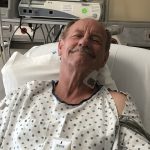 thought that if it were his grandfather, he would want someone to help him, so he acted. Each of these people acted in a way that put them becoming God’s hands on this earth. Bob had angels watching over him, and a family who pray for him all the time. When he had a need, God was there to meet the need, and His people, who hear His voice, did what He told them to do, and in the end they were a part of a miracle. In just under two days, Bob was released from the hospital, and his life goes on. Then I found out at church that another church member, Lori Desanti was also praying. Every prayer, and every player in this was necessary, and I want to thank each and every one of those people who helped us. We can never repay your kindness. And I give all praise to our Awesome God!!
thought that if it were his grandfather, he would want someone to help him, so he acted. Each of these people acted in a way that put them becoming God’s hands on this earth. Bob had angels watching over him, and a family who pray for him all the time. When he had a need, God was there to meet the need, and His people, who hear His voice, did what He told them to do, and in the end they were a part of a miracle. In just under two days, Bob was released from the hospital, and his life goes on. Then I found out at church that another church member, Lori Desanti was also praying. Every prayer, and every player in this was necessary, and I want to thank each and every one of those people who helped us. We can never repay your kindness. And I give all praise to our Awesome God!!
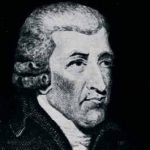
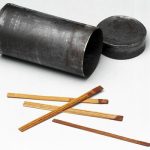 Human beings have always had an interest in fire. Of course, fires have been around…forever, but people didn’t always have the ability to control them, or even get them started. Then 1826, John Walker was stirring a pot of chemicals when he noticed a dried lump had formed on the end of the mixing stick. Without thinking, John tried to scrape the dried glob. Suddenly, the stirring stick ignited. Immediately he knew he had found something amazing. So, he made lots more of his “friction lights” to sell at the local bookstore.
Human beings have always had an interest in fire. Of course, fires have been around…forever, but people didn’t always have the ability to control them, or even get them started. Then 1826, John Walker was stirring a pot of chemicals when he noticed a dried lump had formed on the end of the mixing stick. Without thinking, John tried to scrape the dried glob. Suddenly, the stirring stick ignited. Immediately he knew he had found something amazing. So, he made lots more of his “friction lights” to sell at the local bookstore.
The “friction lights” were three inches long and came neatly in a box with a piece of sandpaper. Walker wasn’t interested in patenting the idea, so Samuel Jones copied the matches and sold “Lucifers.” They were a little more practical than Walker’s friction lights. Lucifers were shorter and came in a smaller cardboard box for easy carrying. Too bad John Walker didn’t patent his product. Imagine how rich he would have become. Matches are still used in lots of places.
A Chinese book titled “Records of the Unworldly and the Strange,” by Tao Gu, makes reference to the earliest description of a match-like product. They were called “fire-inch sticks” and used sulfur to start the flame. Still, they were not strikeable, which makes me wonder how they worked exactly. French chemist Jean Chancel invented the first self-igniting match in 1805. Mr. Chancel’s method involved a wooden splint tipped with sugar and potassium chlorate that was carefully dipped into a small bottle of concentrated sulfuric acid. Chancel’s 
 method was highly unpleasant and dangerous. The mix of chemicals produced a yellow smelly gas called chlorine dioxide, which explodes when it comes into contact with pretty much anything. Today, matches are made with non-poisonous red phosphorus, discovered by Johan Edvard Lundstrom. The Diamond Match Company was the first to sell “safety matches” in the United States, forfeiting their patent rights to allow all match companies to produce safe matches. Still, we can trace it all back to the accidental invention of John walker, pharmacist.
method was highly unpleasant and dangerous. The mix of chemicals produced a yellow smelly gas called chlorine dioxide, which explodes when it comes into contact with pretty much anything. Today, matches are made with non-poisonous red phosphorus, discovered by Johan Edvard Lundstrom. The Diamond Match Company was the first to sell “safety matches” in the United States, forfeiting their patent rights to allow all match companies to produce safe matches. Still, we can trace it all back to the accidental invention of John walker, pharmacist.
 Some people always have a calm look on their face, even if they are not smiling, they somehow manage not to be frowning. Things don’t really work that way for the concentrator…which is what I am. Concentrators tend to have a frown on their face, so people might think they are mad, when in fact, they are not. They might not have even noticed that anyone is looking at them, much less smiling at them. At least not until that person says something to them or writes them a note saying, of all things, “You really should smile!” For the concentrator, there is really no bigger insult. Maybe the person who said it, meant no harm, but if they thought about it, there are much nicer ways to get someone to smile.
Some people always have a calm look on their face, even if they are not smiling, they somehow manage not to be frowning. Things don’t really work that way for the concentrator…which is what I am. Concentrators tend to have a frown on their face, so people might think they are mad, when in fact, they are not. They might not have even noticed that anyone is looking at them, much less smiling at them. At least not until that person says something to them or writes them a note saying, of all things, “You really should smile!” For the concentrator, there is really no bigger insult. Maybe the person who said it, meant no harm, but if they thought about it, there are much nicer ways to get someone to smile.
In fact, the other day, while I was driving down second street in Casper, Wyoming, I saw a young man walking down the street. It was not a warm day, and the young man was bundled up in a coat and hat, but even with the distinct chill, to put it mildly, the young man has a smile on his face as he walked along. He wasn’t on the phone, or walking with someone else, and he wasn’t talking, so I could see no specific reason for the smile on his face.
I wondered what he was thinking about that would put a smile on his face. It didn’t matter really, because I smiled instinctively, because he was smiling. It didn’t matter what he was smiling about, his smile made me smile. It was sort of like the movie, Pay It Forward, except with smiles. I though about what a nice young man he might be, but whether I was right or not, didn’t make any difference. His smile told a tale all its own. A tale of Smiling it forward. It sounds silly, but that is what that young man did. His smile brought a smile to my face, and perhaps my smile brought a smile to the face of someone else, and so on…smiling it forward.
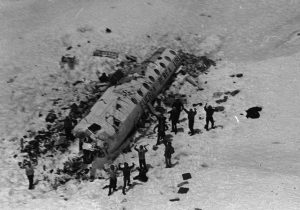 On October 13, 1972 a plane crashed somewhere in the Andes Mountains. That isn’t such an unusual event, but the crash was the last part of this event that was not unusual. Flight 571 was en route from Uruguay to Chili at the time it went down. The Uruguayan Air Force plane was chartered by the Old Christians Club to transport the team from Montevideo, Uruguay to Santiago, Chile. On October 12 the twin-engined Fairchild turboprop left Carrasco International Airport. The plane was carrying 5 crew members and 40 passengers. In addition to club members…friends, family, and others were also on board, having been recruited to help pay the cost of the plane. Because of poor weather in the mountains, they were forced to stay overnight in Mendoza, Argentina, before departing at about 2:18 pm the following day, October 13th. Although Santiago was located to the west of Mendoza, the Fairchild was not built to fly higher than approximately 22,500 feet. Because the Andes mountains were higher than that, the pilots plotted a course south to the Pass of Planchón, where the aircraft could safely clear the Andes mountains. An hour after takeoff, the pilot notified air controllers that he was flying over the pass, and shortly thereafter he radioed that he had reached Curicó, Chile, some 110 miles south of Santiago, and had turned north. However, the pilot had misjudged the location of the aircraft, which was still in the Andes mountains. Unaware of the mistake, the controllers cleared him to begin descending in preparation for landing. Then suddenly, the Chilean control tower was unable to contact the plane.
On October 13, 1972 a plane crashed somewhere in the Andes Mountains. That isn’t such an unusual event, but the crash was the last part of this event that was not unusual. Flight 571 was en route from Uruguay to Chili at the time it went down. The Uruguayan Air Force plane was chartered by the Old Christians Club to transport the team from Montevideo, Uruguay to Santiago, Chile. On October 12 the twin-engined Fairchild turboprop left Carrasco International Airport. The plane was carrying 5 crew members and 40 passengers. In addition to club members…friends, family, and others were also on board, having been recruited to help pay the cost of the plane. Because of poor weather in the mountains, they were forced to stay overnight in Mendoza, Argentina, before departing at about 2:18 pm the following day, October 13th. Although Santiago was located to the west of Mendoza, the Fairchild was not built to fly higher than approximately 22,500 feet. Because the Andes mountains were higher than that, the pilots plotted a course south to the Pass of Planchón, where the aircraft could safely clear the Andes mountains. An hour after takeoff, the pilot notified air controllers that he was flying over the pass, and shortly thereafter he radioed that he had reached Curicó, Chile, some 110 miles south of Santiago, and had turned north. However, the pilot had misjudged the location of the aircraft, which was still in the Andes mountains. Unaware of the mistake, the controllers cleared him to begin descending in preparation for landing. Then suddenly, the Chilean control tower was unable to contact the plane.
The pilot basically found himself caught with high mountains all around him…mountains that he could not climb over. When the plane tried to climb out the wings were clipped by the peaks, and the plane crashed in an unknown location. Because the Chilean control tower thought the plane was much further south, they weren’t even sure where to look. To make matters worse, the white plane was extremely difficult to see against the white snow. Search and rescue efforts from the sky were almost impossible…despite the survivors’ attempts to become noticeable. After 11 days, it was assumed that all of the 45 passengers and crew were dead, so search and rescue efforts ceased. The passengers had access to a radio, and when they heard the news of the search 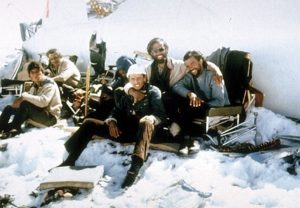 being called off, they were devastated. The crash killed 12 people instantly, leaving 33 survivors to try to stay alive until help could come. A number of the survivors were injured. At an altitude of approximately 11,500 feet, the group faced snow and freezing temperatures. There was no heat, and they only had each other to depend on. While the plane’s fuselage was largely intact, it provided limited protection from the freezing temperatures they faced. Food was scarce…mainly candy bars and wine. Even with rationing, those were gone in about a week. Now the survivors faced the most horrifying decision of their lives. Do they stay alive at all costs, including eating the bodies of the dead for food, or do they simply give up and starve to death? After a heated discussion, the starving survivors resorted to eating the corpses. Their survival instincts had kicked in, even though they knew they might be condemned by the world. Nevertheless, they would probably never forgive themselves anyway, so what the world decided made no real difference. Over the next few weeks six others died, and further disaster struck on October 29, when an avalanche buried the fuselage and filled part of it with snow, causing eight more deaths.
being called off, they were devastated. The crash killed 12 people instantly, leaving 33 survivors to try to stay alive until help could come. A number of the survivors were injured. At an altitude of approximately 11,500 feet, the group faced snow and freezing temperatures. There was no heat, and they only had each other to depend on. While the plane’s fuselage was largely intact, it provided limited protection from the freezing temperatures they faced. Food was scarce…mainly candy bars and wine. Even with rationing, those were gone in about a week. Now the survivors faced the most horrifying decision of their lives. Do they stay alive at all costs, including eating the bodies of the dead for food, or do they simply give up and starve to death? After a heated discussion, the starving survivors resorted to eating the corpses. Their survival instincts had kicked in, even though they knew they might be condemned by the world. Nevertheless, they would probably never forgive themselves anyway, so what the world decided made no real difference. Over the next few weeks six others died, and further disaster struck on October 29, when an avalanche buried the fuselage and filled part of it with snow, causing eight more deaths.
It was decided that someone would have to walk out and tell the officials that they were still alive. On December 12, with just 16 people still alive, three passengers set out for a 10 day journey to find help, though one later returned to the wreckage. After a difficult trek, the other two men finally came across three herdsmen in the village of Los Maitenes, Chile, on December 20. However, the Chileans were on the opposite side of a river, the noise of which made it hard to hear. The herdsmen indicated that they would return the following day. Early the next morning, the Chileans reappeared, and the two groups communicated by writing notes on paper that they then wrapped around a rock and threw across the water. The survivors’ initial note began, “I come from a plane that fell in the mountains.” The Chileans must have heard about the crash, and were most likely stunned to find that there were actually survivors. They hurried to notified authorities, and on December 22 two helicopters were sent to the wreckage. Six survivors were flown to safety, but bad weather delayed the eight others from being rescued until the next day. The 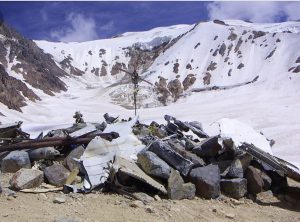 rescue was called the Miracle of the Andes. In the resulting media frenzy, the survivors revealed that they had been forced to commit cannibalism. Many people were outraged until one of the survivors claimed that they had been inspired by the Last Supper, in which Jesus gave his disciples bread and wine that he stated were his body and his blood. This helped soften public opinion, and the church later absolved the men. After watching the movie based on this event, I wondered how any of the rest of us would have handled that situation. We should never be too quick to judge people in such a situation, because we might find that given the same circumstances, we might do the exact same thing.
rescue was called the Miracle of the Andes. In the resulting media frenzy, the survivors revealed that they had been forced to commit cannibalism. Many people were outraged until one of the survivors claimed that they had been inspired by the Last Supper, in which Jesus gave his disciples bread and wine that he stated were his body and his blood. This helped soften public opinion, and the church later absolved the men. After watching the movie based on this event, I wondered how any of the rest of us would have handled that situation. We should never be too quick to judge people in such a situation, because we might find that given the same circumstances, we might do the exact same thing.
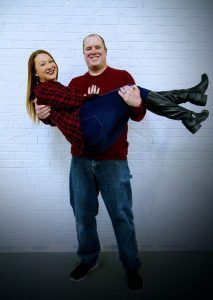 My nephew, Ryan Hadlock is a very tall man, having taken after his dad, Chris Hadlock who is 6’4″ tall. Ryan isn’t quite as tall as his dad, but at 6’3″ tall, he still towers over most people. Nevertheless, while he teases everybody, and tries to act like a tough guy, Ryan is really a big teddy bear. He is a quiet man, until you get to know him, and then he becomes more talkative. Of course, as his aunt, I have never really known a time when Ryan was shy with me or other family members. That can be a good thing, but it can also make me a target for his teasing, Thankfully, I don’t mind teasing, and I would probably wonder if Ryan was mad at me, if he didn’t tease me. That is par for the course in our family, and we wouldn’t have it any other way. We always know that the teasing is done in good fun, and never mean, so we all welcome it. It just adds to the family fun.
My nephew, Ryan Hadlock is a very tall man, having taken after his dad, Chris Hadlock who is 6’4″ tall. Ryan isn’t quite as tall as his dad, but at 6’3″ tall, he still towers over most people. Nevertheless, while he teases everybody, and tries to act like a tough guy, Ryan is really a big teddy bear. He is a quiet man, until you get to know him, and then he becomes more talkative. Of course, as his aunt, I have never really known a time when Ryan was shy with me or other family members. That can be a good thing, but it can also make me a target for his teasing, Thankfully, I don’t mind teasing, and I would probably wonder if Ryan was mad at me, if he didn’t tease me. That is par for the course in our family, and we wouldn’t have it any other way. We always know that the teasing is done in good fun, and never mean, so we all welcome it. It just adds to the family fun.
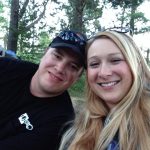 Ryan works hard to take care of his family. He has worked at Fleur de Lis Energy for a number of years, where he is a compression operator. I wasn’t really sure what a compression operator does, so I looked it up. I found out that “often natural gas from the wellhead must be compressed to a higher pressure in order to increase it’s pressure enough in order to get it into pipelines for further transportation to market.” So I assume that Ryan’s job is to be the person who knows when and how much to increase the pressure so the natural gas can successfully move to the pipelines for distribution. That’s a pretty important job,
Ryan works hard to take care of his family. He has worked at Fleur de Lis Energy for a number of years, where he is a compression operator. I wasn’t really sure what a compression operator does, so I looked it up. I found out that “often natural gas from the wellhead must be compressed to a higher pressure in order to increase it’s pressure enough in order to get it into pipelines for further transportation to market.” So I assume that Ryan’s job is to be the person who knows when and how much to increase the pressure so the natural gas can successfully move to the pipelines for distribution. That’s a pretty important job, 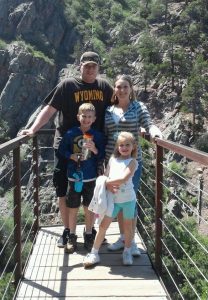 because so many people depend on oil and gas products for everyday life. If thing go wrong, shortages occur. Ryan must be very good at his job, because he’s been there for a good long while.
because so many people depend on oil and gas products for everyday life. If thing go wrong, shortages occur. Ryan must be very good at his job, because he’s been there for a good long while.
Still, while his job is important to a lot of people, Ryan’s first priority is his family. I will never forget when Ryan met his wife, Chelsea Carroll Hadlock. Chelsea is a beautiful girl, and it took Ryan about 2 seconds to know that she was the girl for him. He never looked at anyone else from that day forward. Ryan and Chelsea were, and are, perfect for each other. They love doing the same things, and both of them are dedicated parents to their children, Ethan and Aurora. When I think of the man Ryan has become, I am very much aware of the amazing blessing he is to Chelsea and the kids. Life for them is just going to get better and better. Today is Ryan’s birthday. happy birthday Ryan!! Have a great day!! We love you!!
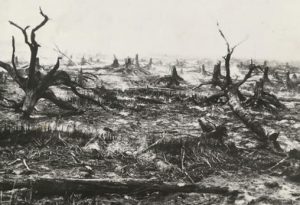 Where there is a forest, there is a possibility of a massive forest fire. The area around Moose Lake in Minnesota, had just such a fire that started on October 12, 1918. The fire, known as the Cloquet-Moose Lake fire, killed hundreds of people and leaving thousands of people homeless. The fire burned a hug area at least 1,500 square miles. The fire, which began at the rail lines near Sturgeon Lake, did the most damage in the Cloquet and Moose Lake areas. This is a region of Minnesota, north of Duluth in the eastern part of the state.
Where there is a forest, there is a possibility of a massive forest fire. The area around Moose Lake in Minnesota, had just such a fire that started on October 12, 1918. The fire, known as the Cloquet-Moose Lake fire, killed hundreds of people and leaving thousands of people homeless. The fire burned a hug area at least 1,500 square miles. The fire, which began at the rail lines near Sturgeon Lake, did the most damage in the Cloquet and Moose Lake areas. This is a region of Minnesota, north of Duluth in the eastern part of the state.
The area was really a recipe for a major disaster of this sort. The timber industry used a crude 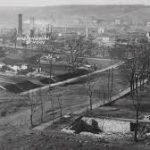 slash method in the thick forests, thus leaving behind dry scraps that were perfect kindling for wildfires. They were not careful where they left the slash either, tending to leave the scraps lying around the rail lines that carried wood from the lumber mills. Train engines of that time often gave off sparks, and when the sparks hit the slash pies, fires were nearly inevitable. The months leading up to October 1918 were very hot and dry, which made matters even worse. The fire began that October 12th, and it quickly spread due to the high winds that day. More than 200 people died in the Moose Lake area, when the fire raced into the community. Many of the local residents tried to escape the raging flames by driving down Highway 73, south of the Kettle River. The
slash method in the thick forests, thus leaving behind dry scraps that were perfect kindling for wildfires. They were not careful where they left the slash either, tending to leave the scraps lying around the rail lines that carried wood from the lumber mills. Train engines of that time often gave off sparks, and when the sparks hit the slash pies, fires were nearly inevitable. The months leading up to October 1918 were very hot and dry, which made matters even worse. The fire began that October 12th, and it quickly spread due to the high winds that day. More than 200 people died in the Moose Lake area, when the fire raced into the community. Many of the local residents tried to escape the raging flames by driving down Highway 73, south of the Kettle River. The 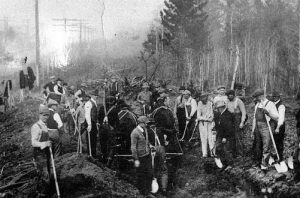 road had a very sharp curve that proved to be too difficult to maneuver for drivers who were speeding away from the flames surrounding them. At least 15 vehicles went off the road within minutes, which resulted in 25 deaths.
road had a very sharp curve that proved to be too difficult to maneuver for drivers who were speeding away from the flames surrounding them. At least 15 vehicles went off the road within minutes, which resulted in 25 deaths.
In all, he fire destroyed 38 towns and villages. The total dead was 453 and another 85 people were seriously burned. The area lost 4,000 houses, 6,000 barns, and 40 schools to the flames.The fire came up so quickly that there was no time to try to get the livestock out, and hundreds of thousands of farm animals also perished in the fire. It was a huge loss for area farmers. In all, the region suffered close to $100 million in damages.

